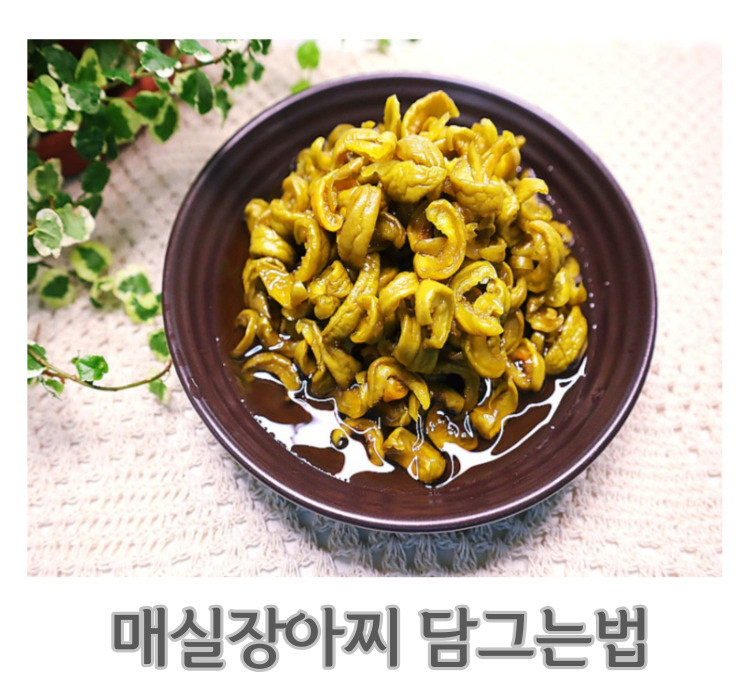Pickled Green Plum (Maesil Jangajji)
Master’s Secret Recipe for Pickled Green Plum Jangajji! Make Delicious Pickled Plums This Summer.

Try making delicious jangajji with green plums, a seasonal summer fruit. It will become a hearty side dish that lasts you a whole year! Well-made sweet and sour pickled green plums are delicious on their own, and the plum extract can be used as a refreshing drink or a seasoning to enhance the flavor of your dishes. Plums are nutritious and good for your health, and now is the perfect time to make them!
Main Ingredients- 800g Green Plums
- 800g Sugar (equal weight to plums)
- 2 tsp Coarse Sea Salt
- 100g Additional Sugar (for plum extract)
Washing Ingredients- 1 Tbsp Baking Soda
- 1 Tbsp Vinegar
- 1 Tbsp Baking Soda
- 1 Tbsp Vinegar
Cooking Instructions
Step 1
Prepare 800g of fresh green plums. It’s important to choose firm, unblemished plums to capture their best flavor and aroma.

Step 2
Fill a large bowl with enough water to cover the plums. Add 1 tablespoon of baking soda and 1 tablespoon of vinegar. This step effectively removes any surface impurities or pesticide residues.

Step 3
Wearing disposable gloves, gently scrub the plums. Rinse them thoroughly 2-3 times under running water. After rinsing, meticulously pat them dry with paper towels, ensuring no moisture remains. This is crucial to prevent mold growth later.

Step 4
Use a toothpick to carefully remove the stems from all the plums. Leaving the stems can result in a bitter taste, so be thorough.

Step 5
Using a knife, cut the plum flesh into 6-8 pieces, avoiding the seed. The seeds can impart bitterness, so they must be removed. Aim for about 800g of plum flesh after removing the seeds.

Step 6
We’ll use Master Hong Ssang-ri’s method for the first fermentation. The ratio of plum flesh to sugar is 1:1. For the 800g of plum flesh, add 400g of sugar (50% of the total sugar). Mix well to ensure the sugar coats the plums evenly. Adding sugar first helps draw out more moisture from the plums.

Step 7
Transfer the sugared plums into a sterilized glass container. Sterilize the container by boiling or steaming and ensure it’s completely dry before use to maintain hygiene.

Step 8
To facilitate the first fermentation, do not seal the container with a lid. Instead, cover it tightly with breathable material like traditional Korean paper (Hanji), cheesecloth, or hemp cloth to allow air circulation. Let it rest in a cool place for 1-2 days. Natural fermentation will begin as moisture is released from the plums.

Step 9
After two days, you’ll notice that the plums have released a lot of liquid and appear wrinkled. This is a sign that the fermentation process is proceeding well.

Step 10
Separate the plum flesh from the liquid that has accumulated during the first fermentation. Place the plum flesh into a clean, sterilized container for the final maturation.

Step 11
Pour half of the separated plum liquid back into the container with the plum flesh. Add the remaining 400g of sugar (the other 50%) and 2 teaspoons of coarse sea salt. The sea salt enhances the flavor and seasoning of the jangajji. After adding the sugar and salt, seal the container tightly to minimize contact with air, using plastic wrap or a sealed lid.

Step 12
The plum liquid from the first fermentation can be used separately. To make plum extract, add about 100g of additional sugar to the reserved liquid, stir until dissolved, then seal and refrigerate for 3 months. This will result in an excellent plum seasoning. Alternatively, dilute it with water for a refreshing and healthy plum drink.

Step 13
The finished pickled green plum jangajji is best enjoyed after maturing for at least 3 months in a cool place like a kimchi refrigerator. This aging process deepens the flavor and aroma, making the plums wonderfully tender and delicious.




